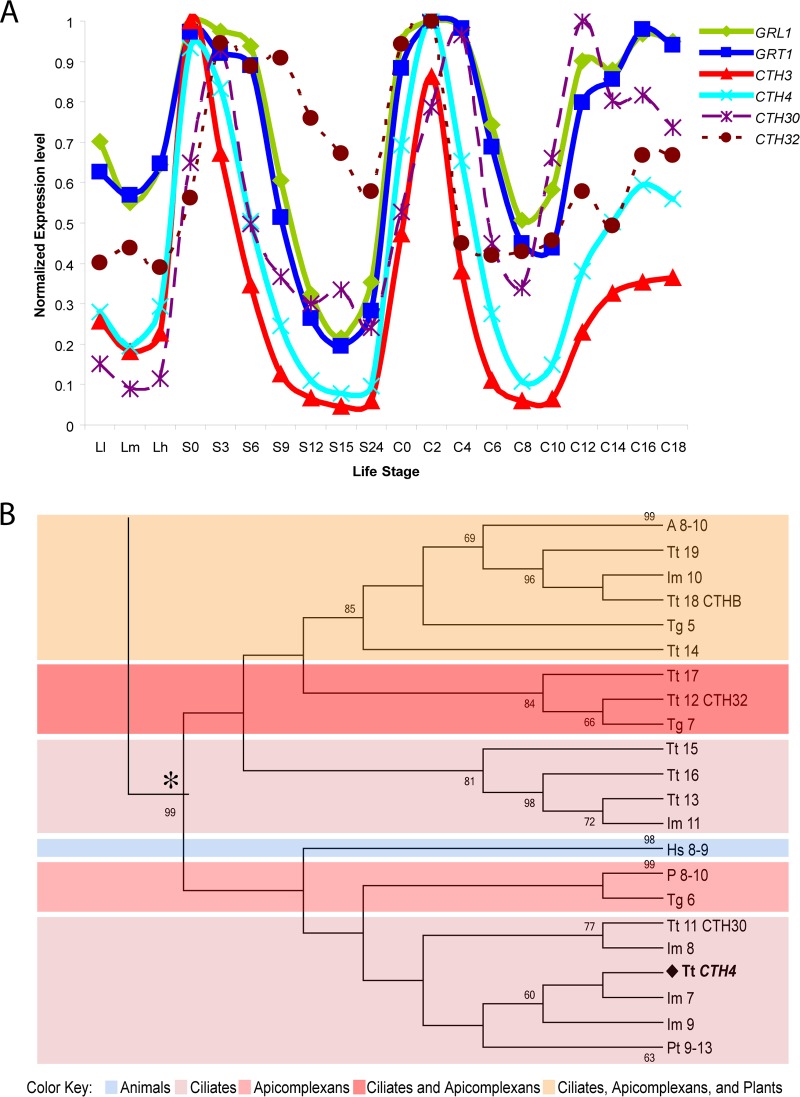FIG 1.
(A) The expression profile of CTH4 is very similar to those of genes required for mucocyst biogenesis: GRL1, GRT1, and CTH3. In contrast, the expression profiles of two genes that are sequence related to CTH4, CTH30 (TTHERM_00502690) and CTH32 (TTHERM_01248970), show less overlap with those of mucocyst-associated genes. The profiles of transcript abundance under a variety of culture conditions, derived via hybridization of cDNAs to whole-genome microarrays, were downloaded from the Tetrahymena Functional Genomics Database (http://tfgd.ihb.ac.cn/). In the plots shown here, each trace was normalized to that gene's maximum expression level. The culture conditions sampled at successive time points represent growing (Ll, Lm, and Lh), starved (S0, S3, S6, S9, S12, S15, and S24), and conjugating (C0, C2, C4, C6, C8, C10, C12, C14, C16, and C18) cultures (28). (B) Phylogenetic reconstruction of cysteine cathepsin genes. The maximum likelihood tree illustrates the phylogenetic relationship between cysteine cathepsins in ciliates, apicomplexans, Arabidopsis species, and Homo sapiens. The T. thermophila cysteine cathepsin CTH4 is emboldened. For key to color blocks, see the bottom. Abbreviations: Tg, Toxoplasma gondii; P, Plasmodium; A, Arabidopsis; Hs, Homo sapiens; Tt, Tetrahymena thermophila; Pt, Paramecium tetraurelia; Im, Ichthyophthirius multifiliis. The tree shown was assembled with aspartyl cathepsins as the outgroup; see Fig. SA1 in the supplemental material for complete tree. See Table SA2 for accession numbers.

